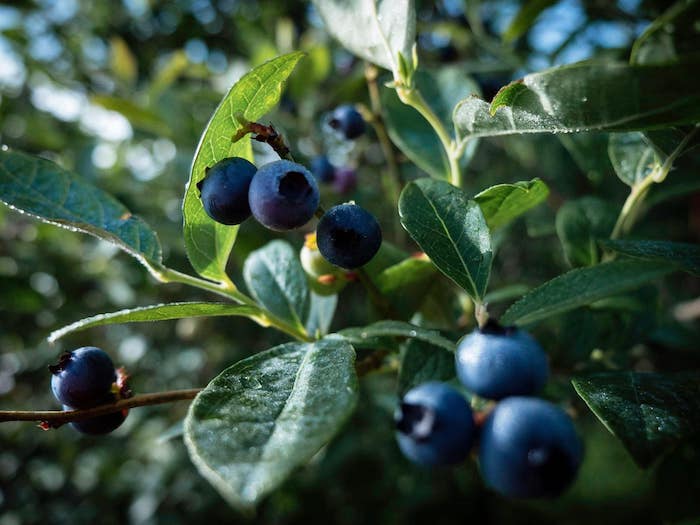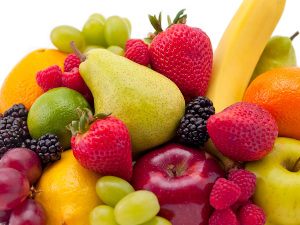Agronometrics in Charts: New Jersey gearing up for its blueberry season

In this installment of the ‘Agronometrics In Charts’ series, Sarah Ilyas studies the state of the New Jersey Blueberry season. Each week the series looks at a different horticultural commodity, focusing on a specific origin or topic visualizing the market factors that are driving change.
Coleman White, the daughter of a distinguished cranberry farmer hailing from Burlington County, undertook a collaborative endeavor with the United States Department of Agriculture (USDA) to develop New Jersey's highbush blueberry (Vaccinium corymbosum), striving to create an impeccable specimen.
Almost two decades after Coleman White started her work, the USDA reported 150 acres in New Jersey were dedicated to the crop. By the time she died in 1954, there were 5,000 acres, a figure that has since nearly doubled. Blueberries have grown into a big business in the Garden State since then.
“Last year, New Jersey saw a late-spring freeze that affected the harvest of blueberries, peaches and some apple varieties that were in bloom when the cold hit,” says Joe Atchison III, assistant secretary and director of marketing for the New Jersey Department of Agriculture.
“This year, we are seeing heavy blossoms and fruit set and expect full crops with good availability throughout the season,” he added.
New Jersey's favorable climatic conditions, characterized by a mild winter and a dry spring, proved instrumental in facilitating a bountiful harvest of blueberries. Demand for the fruit has remained durable, with no discernible impact from inflationary pressures or reductions in consumer spending.
 Source: USDA Market News via Agronometrics.
Source: USDA Market News via Agronometrics.
(Agronometrics users can view this chart with live updates here)
“Blueberries are a ubiquitous item in millions of shopping carts now,” says Tom Beaver, director of sales and marketing for the Glassboro, NJ-based company. “Even with this durable demand for blueberries, the oversupply challenges are real at different points throughout the year. The key is to identify these windows to drive promotion and volume movement to ensure that the growers are getting a fair price and retailers are able to drive sales and volume movement at the right points in time.”
“By June 12, we should be into full volume, and we anticipate an excellent crop, aided by perfect weather and excellent pollination outcomes,” Beaver said. “The New Jersey season should carry us well into July, and we will transition into mostly Peruvian supplies by mid-August. We will then continue with imports from Peru and Chile primarily through March of next year, before transitioning back to domestics.”
 Source: USDA Market News via Agronometrics.
Source: USDA Market News via Agronometrics.
(Agronometrics users can view this chart with live updates here)
Climate change, however, poses a significant threat to the production of blueberries. Early blueberry blossoming due to climate change increases vulnerability to frost and freezing in spring, impacting crop yield. “When blueberries go into bloom early, they become more susceptible to frost and freeze in early spring,” says Anthony DiMeo III is a fourth-generation blueberry grower in Hammonton whose great-grandfather purchased DiMeo Farm’s original blueberry bushes 105 years ago from Elizabeth Coleman White.
Warmer temperatures during the winter can be just as harmful to blueberries. “Their growing season depends on cold snaps,” says O’Malley. “The lack of cold snaps would prevent blueberries from being able to flower and develop fruit.” Climate change introduces water supply variability, potentially causing droughts, forest fire risks in the Pinelands, and coastal flooding. But more frequent, severe storms might be an even greater threat, says Rutgers agricultural agent Gary Pavlis.
“If you’ve got a lot of rain, the fruit will swell up with water and cause cracking,” says Pavlis. “It also decreases the flavor and quality of the berry.” The best way to slow down climate change, says O’Malley, is reducing the use of fossil fuels that are known to cause it. “We need to move toward clean, renewable [energy] sources,” he says.
In our ‘In Charts’ series, we work to tell some of the stories that are moving the industry. Feel free to take a look at the other articles by clicking here.
All pricing for domestic US produce represents the spot market at Shipping Point (i.e. packing house/climate controlled warehouse, etc.). For imported fruit, the pricing data represents the spot market at Port of Entry.
You can keep track of the markets daily through Agronometrics, a data visualization tool built to help the industry make sense of the huge amounts of data that professionals need to access to make informed decisions. If you found the information and the charts from this article useful, feel free to visit us at www.agronometrics.com where you can easily access these same graphs, or explore the other 21 commodities we currently track.














































